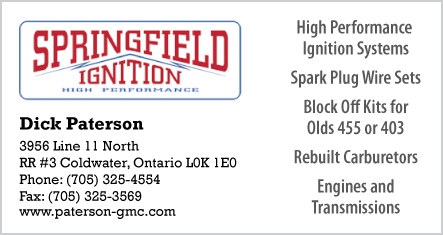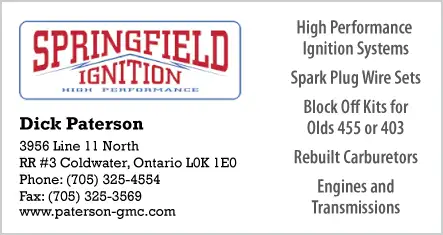At the Fall 2011 rally at Emerald Desert RV Resort we had some good and informative tech sessions but I thought that Chuck Garton's session on his instrumentation added a couple of surprises, at least for me.
Chuck might be described by some folks as "obsessed" with gauges but, actually, he just likes to know what is going on. After lots of miles with lots of gauges Chuck has some observations about some things that lots of us have wondered about and even developed theories about.
First, some pictures:
As you can see, Chuck measures lots of stuff and has for a long time. Here are some notes from Chuck from the GMCWS tech session at Emerald Desert in October 2011:
Engine oil temperatures and oil cooling:
I have an oil temperature gauge with 2 senders: one in the oil pan front sump (also acts as drain plug), and another in the oil filter cooler adapter. With the factory oil cooler in the radiator I measured a 4 degree drop in oil temperature between the oil pan and oil returning from the cooler. Using an external oil cooler (I have an aluminum radiator with no coolers installed) I now measure a 30 to 40 degree drop between the same points. My oil temperatures in the pan average around 250 to 260 degrees. Non-synthetic oil begins to break down at 230 degrees. If you run non-synthetic oil, I'd suggest changing it at 3,000 mile intervals.
Fuel temperatures
I have fuel temperature senders in each (3) fuel tank and I also have one outside the driver's side frame near the fuel tanks where my 3 fuel pumps are mounted. The hottest fuel temperature I have observed was 148 degrees - twice. Once on Baker Grade on I-15, and another time on I-84 east of Portland, OR. In both cases it was August and the outside temperature was 115 . The temperature outside the frame was 122 . On I-15 Baker Grade with two fuel tanks, the front tank was 5 degrees hotter than the rear tank. On I-84 with three tanks, the front tank was 5 degrees hotter than than both rear tanks.
Generally speaking, my fuel temperatures run 30 warmer than outside temperatures. After installing heat shielding between the exhaust pipe and the fuel tanks, I could not detect any change in fuel temperatures. On the GMC Pacific Cruisers web site (www.gmcpc.org), I have two articles posted under "shadetree". One tells the story on the third fuel tank installation and contains all the measures I have taken to combat vapor lock. Right now, I am not experiencing vapor lock but I have been here before! The other article talks about rear suspension upgrades I have installed.
Air conditioning efficiency
The cheapest and probably the most used gauge in my coach is a Radio Shack indoor/outdoor digital thermometer with a wired probe for outside temperature. The probe is pressed into the dash air conditioning evaporator. This temperature indicates how well the Dash Air system is working. Using DuraCool worked well below 95 degrees outside temperature, but above 95 degrees, R-12 worked much better. At 104 degrees outside, R-12 would keep the evaporator at 32 degrees but the evaporator temperature with Duracool was up around 45 .
Conclusions
Chuck probably has more observations he will be willing to share with us in future articles. Let's hope so.























